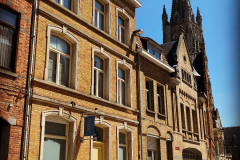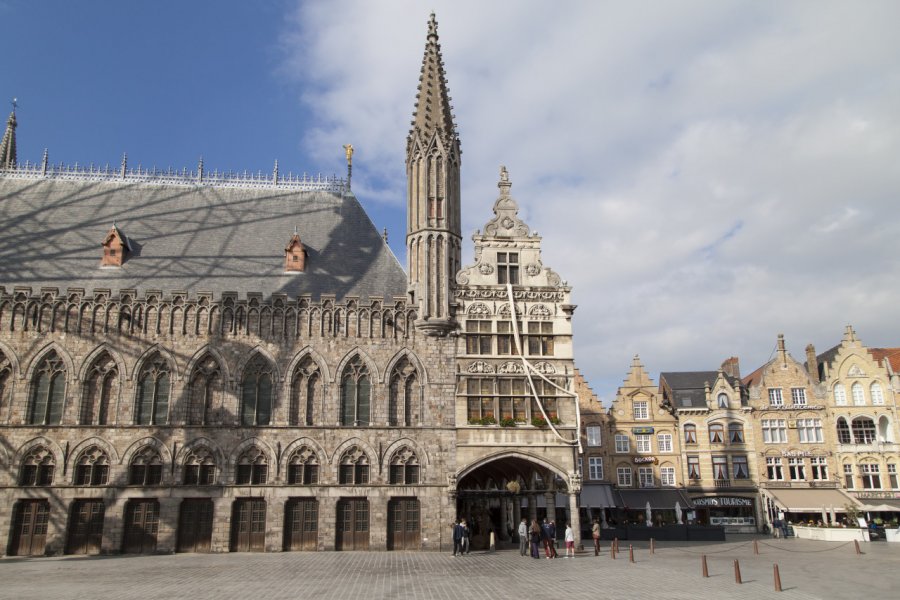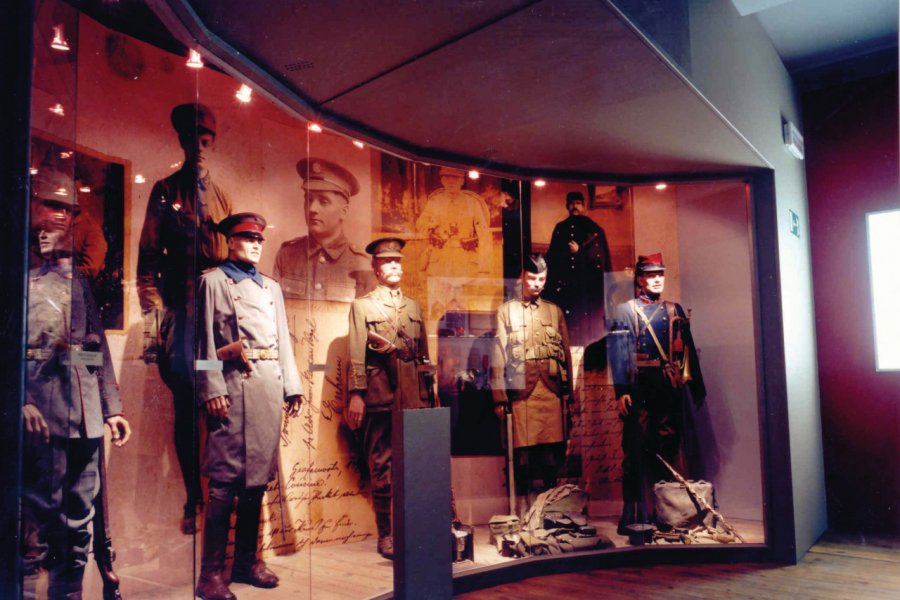Travel Guide Ieper
Find an accommodation
Advertising
Ypres' history and heritage treasures make it one of Flanders' not-to-be-missed cities. In the Middle Ages, Ypres was one of the three most powerful cities in Flanders, along with Ghent and Bruges. It owes its renown to the cloth industry. Strategically placed, it became an influential commercial center, and increased its trade with the whole of Europe, particularly with England. Ypres wool was highly prized by the English! But this position also meant that Ypres was repeatedly besieged. Over the centuries, it was coveted by France, Holland and England. Its medieval ramparts were reinforced in the 17th century.With the decline of the cloth industry, plague epidemics and wars between European powers, the town gradually declined, before finding a form of stability thanks to its status as an episcopal town and the establishment of religious congregations.Unfortunately, the First World War disrupted this peace. The nerve center of a violent and bloody four-year war, Ypres was the scene of three major battles.The German advance was halted in France during the Battle of the Marne, and the fighting shifted to the Westhoek. While the Belgians had halted the German advance by flooding the Yser plains in October 1914, the British and French tried to prevent the capture of Ypres. From October 22 to November 22, 1914, the Germans encircled part of the town, while the Allies waited on the other side... Both armies camped on their positions and dug trenches..The second battle took place from April 22 to May 25, 1915. In April, the Germans took possession of Hill 60, pouring over 150 tonnes of chlorine gas on the Allied troops, killing thousands and creating immense chaos. Despite this violence, Ypres once again resisted a German invasion.The third battle took place from July 31 to November 10, 1917. In the summer of 1917, the whole of Europe shook. During the Battle of Messines, 19 mines were placed by the British at the end of tunnels dug by brave Australian and Canadian soldiers. The aim? To dislodge the German forces. The detonation of the mines could be heard as far away as London. More than 10,000 German soldiers were killed. Although the Allies regained some ground in the autumn of 1917, the second phase, the Battle of Passchendaele, began. This operation was one of the greatest military disasters of the Great War. The Allies had not prepared for the wet weather, which turned the bombed terrain into a swamp, trapping the soldiers and leaving them at the mercy of the Germans, protected by their cement bunkers. In all, more than 400,000 Allied soldiers were killed or wounded. It marked the first use of mustard gas by the Germans, a gas that destroys the respiratory tract and burns the skin. All this for a gain of just 8 kilometers...At the end of the war, Ypres was nothing but a field of ruins. The British even wanted to acquire it to turn the town into a perpetual memorial to the thousands of soldiers who died in the fighting. In the end, the town was entirely rebuilt along medieval lines. This identical reproduction is a true masterpiece, and gives visitors the impression of walking through an ancient town, even though the present-day town has only existed in its complete form since 1967!However, the city has forgotten nothing of its past, and numerous museums and monuments dot the town and its surroundings, bathing it in a moving atmosphere. For the Centenary of the War, all these memorials come to life and perpetuate this essential work of remembrance, so that the sacrifice of these thousands of men will never be forgotten.A town of heritage and history, Ypres is a Belgian city not to be missed.
What to visit Ieper?
Advertising
Weather at the moment
Advertising
Organize your trip with our partners Ieper
Transportation
Book your plane tickets
Car Rental
Boat rental
Accommodation & stays
Find a hotel
Holiday rental
Find your campsite
Tailor-made trip
Immersion travel
Services / On site
Activities & visits
Find a doctor
Ieper travel inspiration
Find unique Stay Offers with our Partners
Pictures and images Ieper
Featured articles Ieper
Other destinations nearby Ieper
5 km away





















